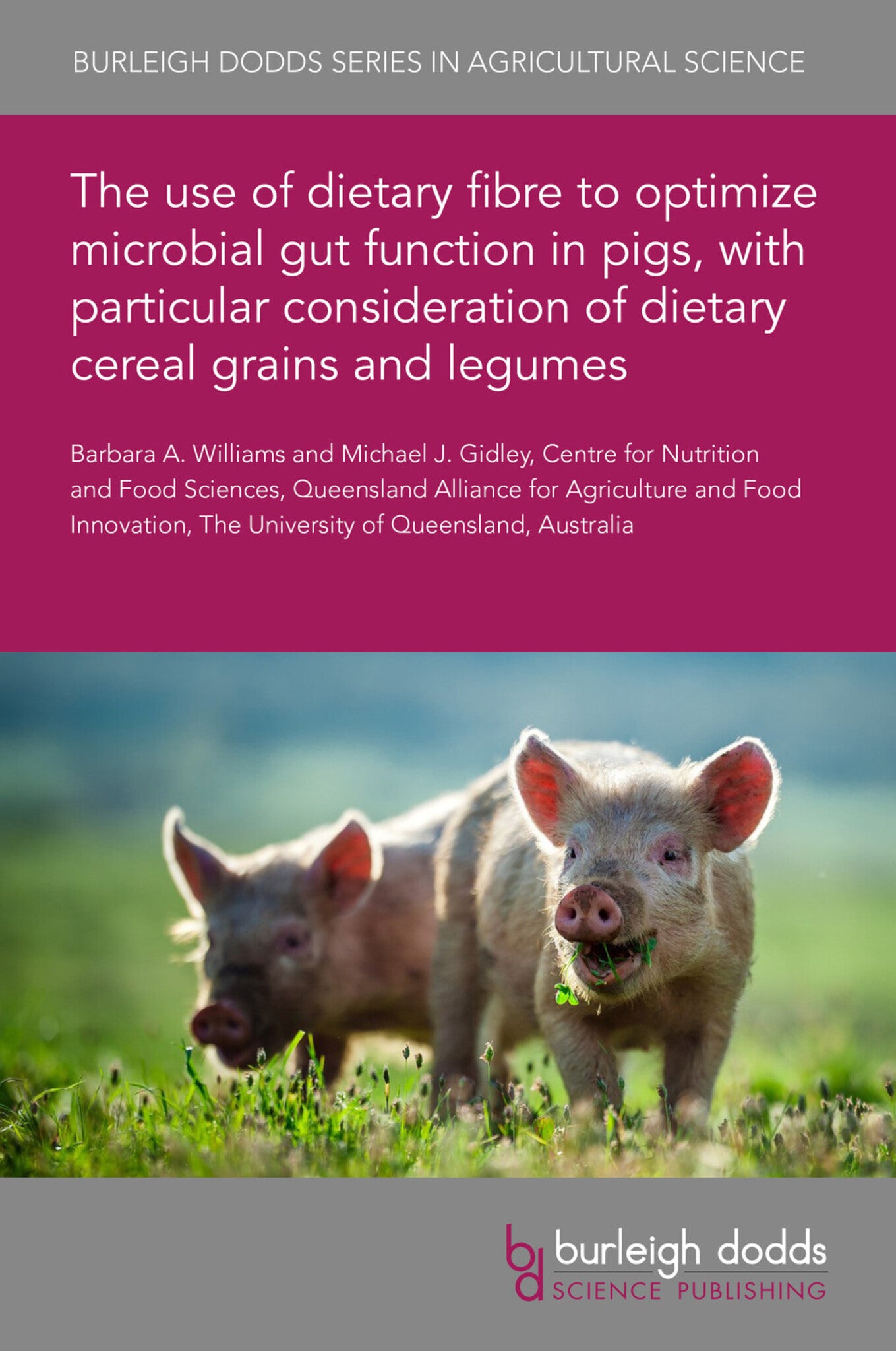We're sorry. An error has occurred
Please cancel or retry.
The use of dietary fibre to optimize microbial gut function in pigs, with particular consideration of dietary cereal grains and legumes
Regular price
£25.00
Sale price
£25.00
Regular price
£0.00
Unit price
/
per
Sale
Sold out
Re-stocking soon
This chapter examines interactions of dietary fibre components of pig diets with GIT microbiota, emphasizing cereals and legumes fed to pigs. Carbohydrate composition of these feedstuffs are descri...
Read More

Some error occured while loading the Quick View. Please close the Quick View and try reloading the page.
Couldn't load pickup availability
- Format:
-
10 January 2022

This chapter examines interactions of dietary fibre components of pig diets with GIT microbiota, emphasizing cereals and legumes fed to pigs. Carbohydrate composition of these feedstuffs are described, and their relationship to metabolic activity of the porcine intestinal microbiota and interactions with the host. Fermentable carbohydrates which act as substrates for microbial metabolism are described, followed by an assessment of cereals and legumes as potential modulators of intestinal microbiota. Past work focussed on purified extracts, but attention is now focussing on whole grains or their fractions such as brans, in terms of effects on microbial populations. Such studies are showing the positive consequences of mixtures of DF in the form of complex plant cellular structures, rather than single refined ingredients, to achieve beneficial health outcomes. Further work is also needed to define appropriate quantities and types of DF to achieve desired effects whilst minimising negative outcomes.

Price: £25.00
Publisher: Burleigh Dodds Science Publishing
Imprint: Burleigh Dodds Science Publishing
Series: Burleigh Dodds Series in Agricultural Science
Publication Date:
10 January 2022
ISBN: 9781801463683
Format: eBook
BISACs:
TECHNOLOGY & ENGINEERING / Agriculture / Animal Husbandry, Animal husbandry, TECHNOLOGY & ENGINEERING / Agriculture / Sustainable Agriculture, Sustainable agriculture, Agricultural science

1 Introduction 2 Gut microbiota and function 3 Dietary fibre in pig diets and microbial gut function 4 Future trends in research 5 Where to look for further information 6 References



